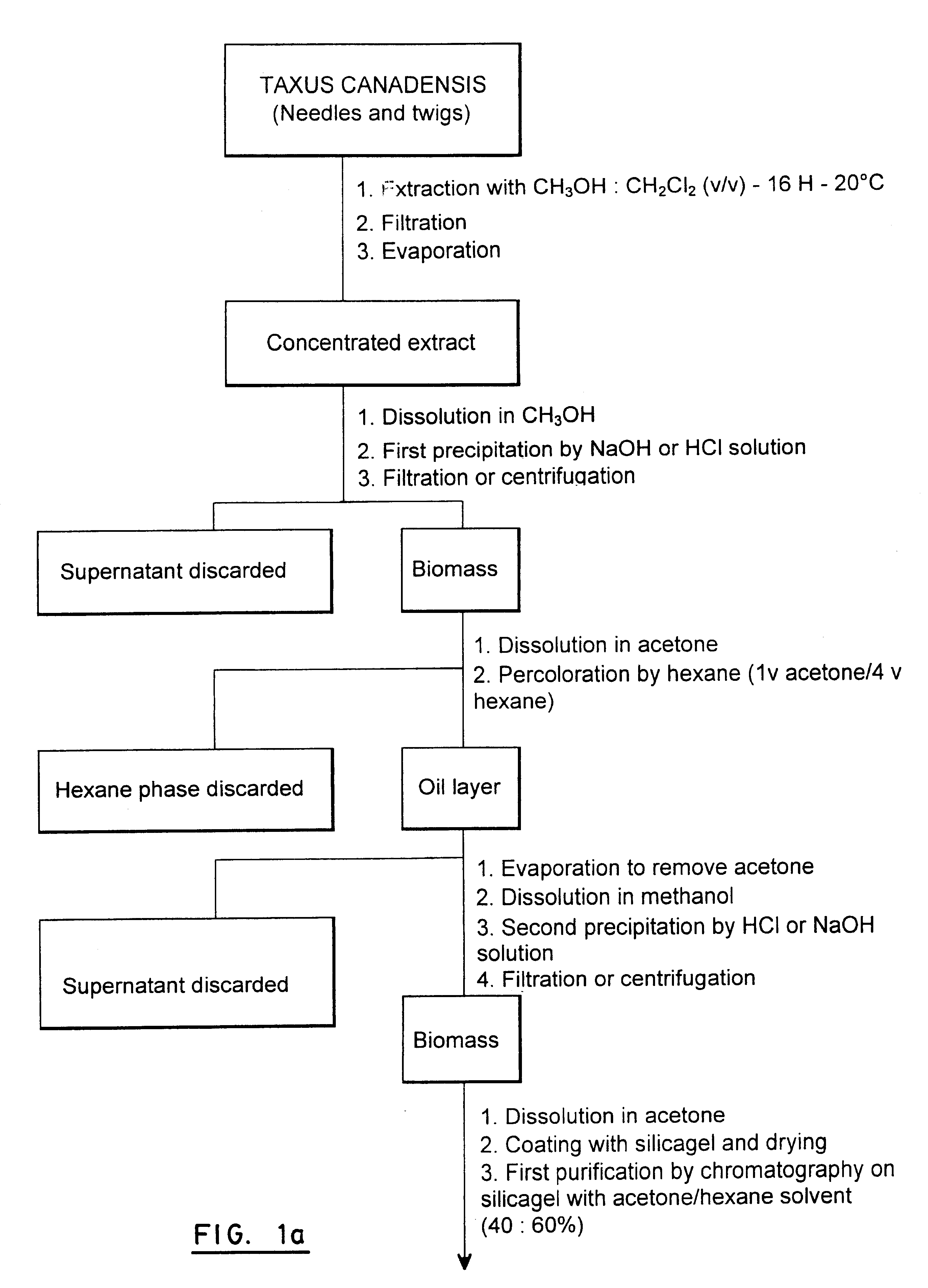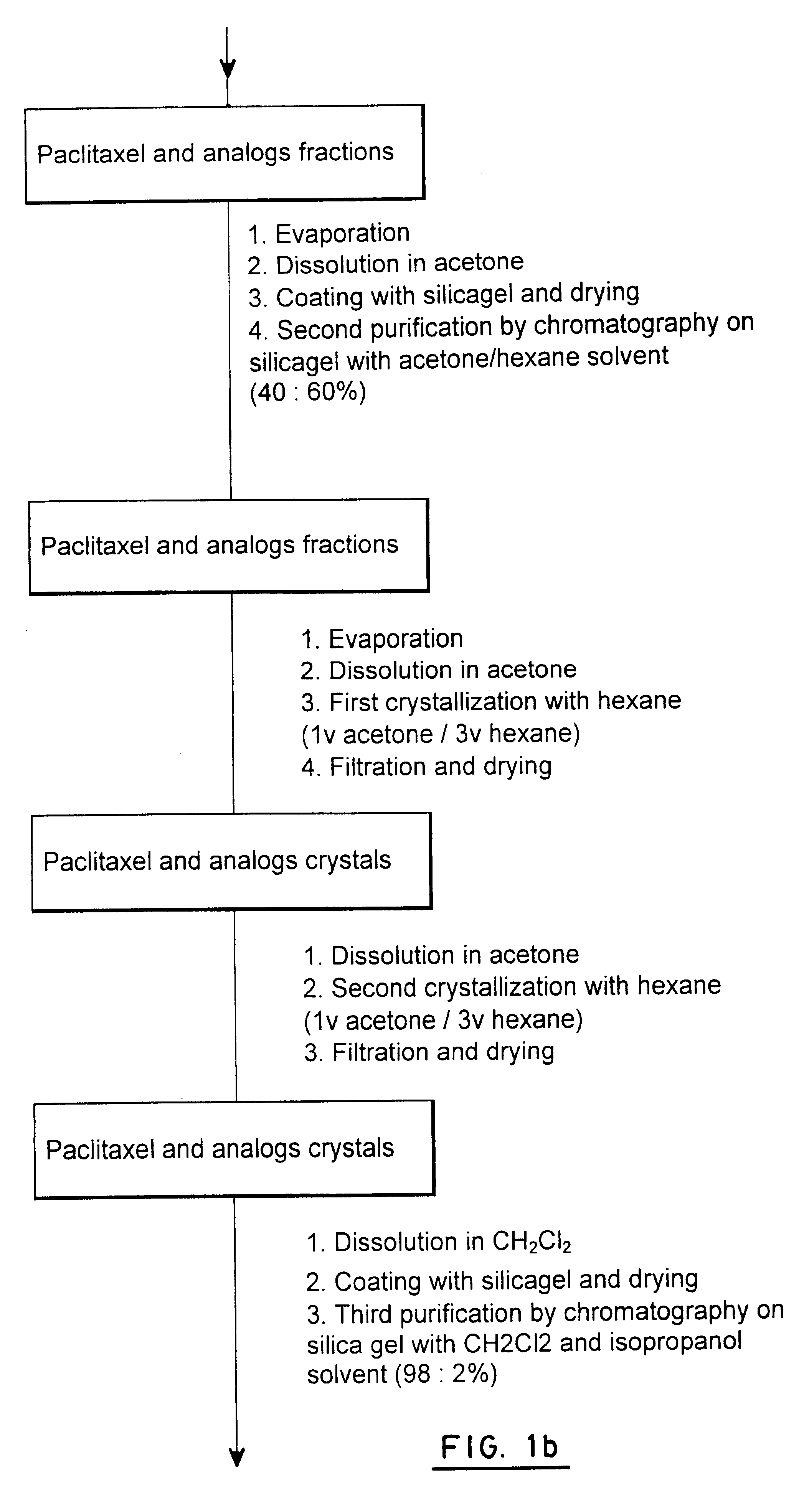Process for extraction and purification of paclitaxel from natural sources
- Summary
- Abstract
- Description
- Claims
- Application Information
AI Technical Summary
Benefits of technology
Problems solved by technology
Method used
Image
Examples
example 2
The process disclosed in example 2 was similar to the one disclosed in example 1 except for the first and second precipitation steps that were carried as follows.
First Precipitation
The extract concentrate was recovered and diluted with 2 L of methanol. The biomass was isolated by precipitation by adding the extract to a solution of HCl at 20 mM. A very fine precipitate was formed as the extract was added. The volume of ratio of the extract with respect to the acidic solution was about 1:10. The fine precipitate was very difficult to filter. Only a centrifugation at high speed: (15,000-20,000 rpm) could allow recovery of the biomass. Thus, NaCl was added to the solution at a ratio of 50 g / L of solution in order to make the precipitate more agglomerated. The precipitate was centrifuged at 4200 rpm at 20.degree. C. during 30 minutes (J6MC Beckman.RTM. Centrifugal machine, 4.2 JS rotor).
The recovered precipitate was dried with air or under vacuum or lyophilized. The weight of the precip...
PUM
 Login to View More
Login to View More Abstract
Description
Claims
Application Information
 Login to View More
Login to View More - R&D
- Intellectual Property
- Life Sciences
- Materials
- Tech Scout
- Unparalleled Data Quality
- Higher Quality Content
- 60% Fewer Hallucinations
Browse by: Latest US Patents, China's latest patents, Technical Efficacy Thesaurus, Application Domain, Technology Topic, Popular Technical Reports.
© 2025 PatSnap. All rights reserved.Legal|Privacy policy|Modern Slavery Act Transparency Statement|Sitemap|About US| Contact US: help@patsnap.com



